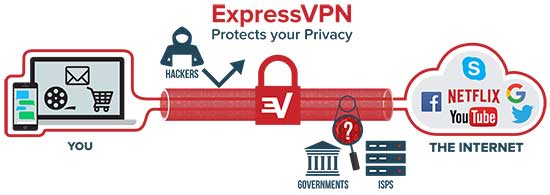Accessing the internet is normal and to a great extent safe if you do it within the confined boundaries of your house. It is secure, easy to connect to, and quite uncongested unless the entire family is using the Wi-Fi connection for streaming applications.

When you venture outdoors though, it is an absolutely different story. There are public Wi-Fi connections available more than ever, allowing you to stay in touch with work or entertainment from just anywhere you happen to be. But getting connected to a public Wi-Fi connection is not that simple and safe as it is with the in-home connection.
A Wi-Fi network available publically is inherently less safe than the private or personal one. It is because you don’t know who established it and who else is using it. Ideally, you might not use the public network as you have an internet connection in your smartphone. But there can be instances when there is no other practical option available,and you have to use the public Wi-Fi network.
So, is there any way out to maintain your security while using the public Wi-Fi network?
Yes! There are!
Here we list some of the best ways to protect you on public Wi-Fi with ease.
1. Go Only For Trusted Networks
Wi-Fi enabled at reputed public spots like Starbucks, Hyatt, or any other junction is less likely to suspect. It is because such companies are already getting money out of you and at the same time try to maintain the security to the utmost level as they are conscious about their brand image.
But not all public Wi-Fi networks are equally secure. This depends much on who is using it and who is offering it, but in context to well-known security brands usually, offer better services than random public Wi-Fi connections that pop up in your smartphone in a shopping mall or a third party that you are unaware of. Wi-Fi networks available publically are making money out of it,and hence you need to browse carefully so that your data safety is maintained.
2. Stick to HTTPS

As you might be aware, Google Chrome let you know the site you are visiting uses an unencrypted HTTP connection and not the encrypted HTTPS connection by labeling it ‘Not Secure.’ Keep a close check on such warnings, especially when you are using public Wi-Fi networks as this can track data that travels between you and the website’s server you are linking to. With HTTP, it is quite easy for them to watch what you are browsing and doing.
3. Don’t Pass on Too Much Information
If while using public Wi-Fi you are asked for a bunch of personal questions, like your phone number, email, or more, you must avoid providing the information. If there is an urgency to connect to such networks, it would be wise to stick to places that are trustworthy. Additionally, try using an alternative email ID rather than your primary one. Restaurants and stores usually do this in order to fetch your personal information and use it afterward for the furthertrade-off.
In addition to this, try to sign up for less different public Wi-Fi networks as possible. For example, if it is possible to get connected to a network through a service you are already using, then it is preferable that you use it rather than signing through another company.
4. Limit File Sharing and AirDrop

When using a public Wi-Fi network, you are surrounded by strangers. You would want to cut off the features that allow frictionless file sharing on the devices. On a computer, this implies visiting the Network and Sharing center, then alter the advanced sharing settings, and switch off file and printer sharing.
For smartphones and Macs, it is going to system preferences, then sharing, and unselects everything. The next step is to head to the finder, click on Airdrop and select ‘enable me to be discovered by no one.’ Doing this will ensure that no one nearby can capture your files or send you stuff that you don’t want.
5. Keep a Close Check on What You Are Signing Up for
It is essential to check the attached terms and conditions before you connect to a public Wi-Fi connection. You might not be able to understand each and every word, but must be able to spot the major red flags, especially around the type of data they are collecting from the session and what they are doing with the collected data.
If you discover any policy to be impenetrable, run a quick web search to know about issues or problems that other users might have experienced. Don’t just blindly click on websites or stuff that pop-up on your smartphone screens. And if they ask you to install any browser extension or extra software, then back away instantly.
6. Try to Use VPN

To date, the most effective way to stay safe on the public Wi-Fi network is to install a VPN or Virtual Private Network client on your device. This will encrypt data traveling to and from the phone or laptop and hook you to a secure server. Thereby making it difficult for other people on the network to see your activities and grab your important details.
Connecting to a VPN network is straightforward. You just have to download your preferred service provider,and the step-by-step guide will be available to you. If you travel a lot then connecting to a good and reliable VPN network is worth investing.
Summing Up
In the future scenario, with next-generation WPA3Wi-FI security protocol coming online, public Wi-Fi would offer more secure built-in protections. Till then, you need to rely on the available network, and hence, follow the above ways to protect your data from getting steal through a public Wi-Fi network.
The best to avoid experiencing problems due to public Wi-Fi is not to use them at all. But if there is urgency then do follow the above-mentioned tip to maximize your chances of staying away from the trouble.
Filed Under: Tech Articles


Questions related to this article?
👉Ask and discuss on EDAboard.com and Electro-Tech-Online.com forums.
Tell Us What You Think!!
You must be logged in to post a comment.